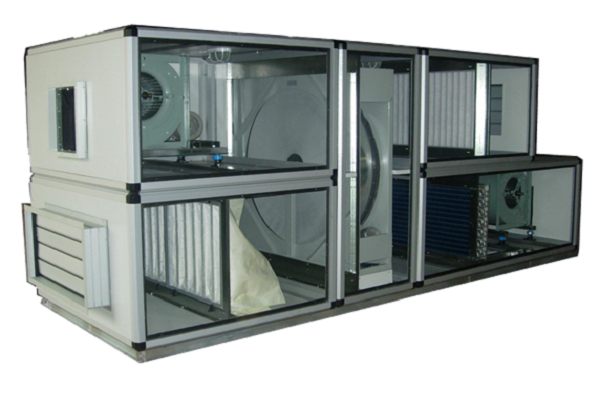AHU Manufacturers need new tools and procedures to meet the wave of demand generated by NetZero regulations and air quality standards due to COVID 19. Many manufacturers are hitting a productivity wall working in the fragmented and siloed paradigm that has become standard operating procedure in the industry. According to recent research, the custom commercial AHU segment of the AHU market (hospitals, manufacturing cleanrooms, universities, shopping centers, labs, data centers, etc.) is predicted to be the fastest-growing market segment from 2021 to 2030. With this new demand about to ramp up, manufacturers are looking to improve productivity without massive investments in new manufacturing infrastructure and human resources.
As an engineer, I’ve worked in the industry for more than two decades and heard the concerns of various AHU manufacturers on how Custom AHUs are designed, sold, and built. Here is what is at the top of AHU Manufacturer’s wishlist:
Getting a Fast Start on New Projects
Currently, most manufacturers treat each project as a one-off, and there is very little leveraging past of projects. But even though each design is custom, they do have common elements, and some projects are more evolutions than revolutions of past designs. In my years as an engineer, virtually every manufacturer I’ve worked with has expressed the wish for the ability to bootstrap new projects in order to fast-track initial design.
Putting an End to Rework
If you are in the industry, you know how painful the transition from initial design to sales to submittal to manufacturing can be with hours of time wasted re-entering data and the inherent risks of human error. The ability to have a unified, end-to-end process is a holy grail for custom AHU manufacturing. The capability to use the data generated during the initial design and sales phases to drive order entry, submittal package development, and the creation of the Bill of Materials (BOM), and even after-sale service and maintenance, is near the top of every manufacturer’s wishlist.
Effective Sharing and Collaboration
If you’ve been in this industry for any amount of time, you know the hassle and time wastage involved in project communications. Emailing project documentation to manufacturers reps, clients, and construction firms and then manually re-entering any feedback and changes and trying to keep track of versioning drives wasted time, miscommunication, stress, and human error. Sharing data and collaborating on projects online, would streamline communications and provide a huge productivity boost. It’s something on almost every manufacturer’s punch list.
Single Source of Truth
Another source of inefficiency that drives time, cost, and frustration for custom AHU manufacturers is the need to manage cost models manually, validation parameters other basic data sources used regularly across all projects. Searching for costing calculations and having to copy and insert them in your current project spreadsheets is slow, painstaking work. Manufacturers have repeatedly told me that they need a single source of truth for components, pricing models, validation parameters, and all the base data required for every project. And more than that, they need to have an in-house content management system, which gives them the ability to manage and update the data and models quickly and easily. The selection software in use by most firms today includes component data but stops short of centralizing and standardizing the pricing and validation models required to complete the sales process.
Re-Engineering Custom AHU Manufacturing
The common thread in all the feedback I’ve been getting from manufacturers is a frustration with how things have traditionally been done. This is driving an awareness that the answer to getting more competitive isn’t necessarily to be found in expanding physical capacity or adding new personnel.
The answer, or at least a large part of it, lies in questioning (and rationalizing) the siloed and fragmented process that has become the accepted industry standard over the past several decades. Re-engineering is never easy, and it’s never painless or costless. But as the technology and the will to address these issues emerge, the organizations willing to face these challenges and invest in working smarter, not harder, will be in pole position to take advantage of the new opportunities analysts are predicting for the custom AHU market.

